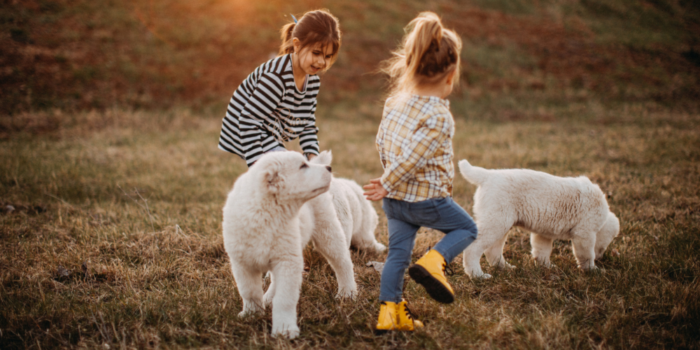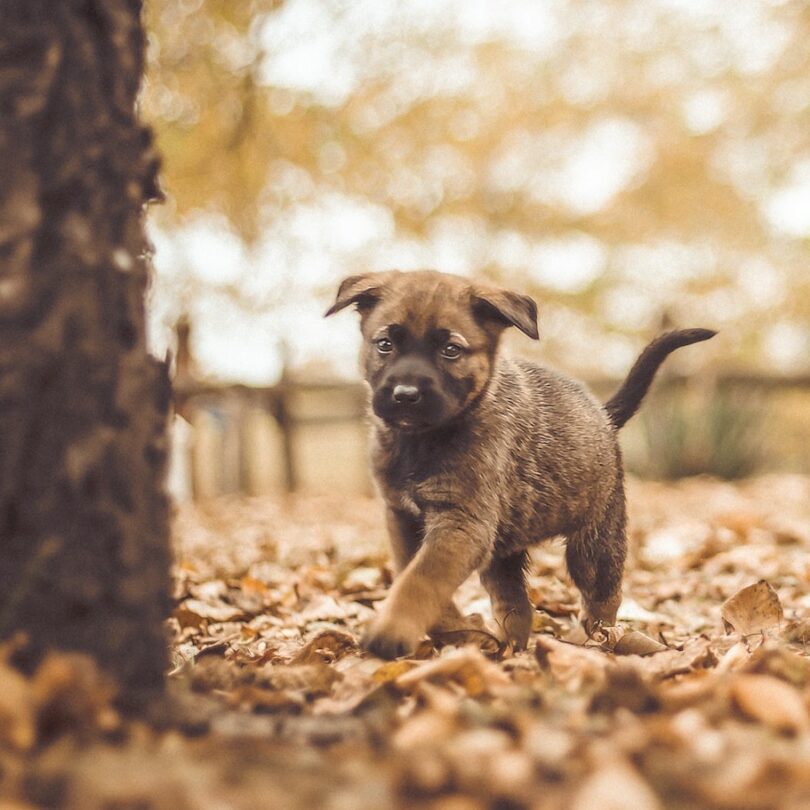Join me on this episode of the Paws & Reward Podcast as I interview Kirsten Kinsella, a therapy dog trainer that works with children in NYC. Kirsten shares the tips and tricks that she uses to facilitate successful interactions between kids and dogs and the 5 things you can do today to build better bonds.
**Please note: If you are a parent navigating the relationship between your kids and a dog that is displaying fear-related behaviors or even threat displays such as growling or snapping toward your children, this episode is not for you.
If you’re looking for more resources on how to train your dog to be kid-friendly, please visit the International Association of Animal Behavior Consultants website to search for a certified trainer near you in order to address this behavior concern safely.
#1: Intentionally facilitate positive interactions for kids and dogs
Relationships take work. Building connection and trust between two beings requires everyone to:
- Think about the other party’s perspective.
- Check-in and avoid assuming that everything is okay.
- Intentionally deposit positive experience into the relationship trust account.
- Be aware of certain behaviors that damage trust.
This is no different when we’re building and strengthening relationships between kids and dogs. Even the most kid-friendly dog breeds can struggle to build connection with your youngest family members. It’s so important to keep a close eye on the types of interactions that are taking place.
A few other ways Kirsten suggests building positive experiences between kids and dogs include:
Offering the child and the dog consent during all interactions.
Neither should be forced into a situation that does not feel good to them. We have the luxury of asking our children which situations feel good and which ones do not. We do not have that luxury with dogs, so we must read their body language. If you notice your dog avoiding the child in any way, please take note of what caused that reaction.
Structure their interactions using dog training for kids.
Teach the kids how to train the dog. This is a great way to get the kids involved with training, give the dog a mental stimulation outlet and has the possibility to create positive associations for both parties.
Kids and dogs love games! The games below facilitate parallel play which is a safe hands-off approach. A few awesome ideas that Kirsten shares in the podcast include:
- Balancing treats on fly swatters and then tossing the treats to the dog.
- Using a pool noodle toy and dropping treats through the chute.
- Playing find it by tossing treats to the dog.
#2: Establish boundaries and structure for kids and dogs.
Both dogs and kids do well when there are rules, boundaries and structure in place. A few ways to include these in your daily life include:
- Playing games using environmental cues. Have your child sit in a chair (environmental cue for the child) while they toss teats to the dog in the living room (environmental cue for the dog).
- Have a consistent daily schedule of play and downtime for both the child and the dog.
- Remember that behavior is fluid so what might work one day, has the possibility of changing the next, so be open to shifting the boundaries as needed.

#3: Set up safe zones for both kids and dogs.
We already discussed how identifying environmental cues can help facilitate the desired behavior that we’re looking for. Another way to do this could include:
- Placing up baby gates or exercise pens to distinguish the dog’s space from the child’s space.
- If the situation is too overstimulating, don’t be afraid to place the dog away in another room or in the crate with a yummy Kong or bone. You have full permission to manage and avoid the interaction to prevent unwanted outcomes.
#4: Reinforce good choices!
We already suggested dog training for kids (if their age allows). Teaching the dog how to show up around the child is one of the best things you can do for the dog so they understand which behaviors work for you.
You can use this same concept for your child! Positive reinforcement for everyone. Make sure to mark and reward the good behavior you like to see from both kids and dogs.
Good dog behaviors:
- Approaching the child with loose body postures
- Sitting for the child
- Leaning into pets with the child
- Not jumping up
Good behaviors from the children:
- Petting under the chin
- Allowing the dog to approach
- Being gentle with the dog
#5: Teach your children canine body language.
The best way to do this is through video and images. I have listed a few great resources below that you can use to teach yourself and your child how to understand your dog.
Kirsten shares a few ways to turn this into a game! One way includes asking your child how they feel when they are sad. What does that look like? Then asking the child when they know Fluffy is sad. What does that look like? And so on!
When you use these strategies to work with kids and dogs, you can truly create harmony in your house and build true connections between your children and your pets.
More Resources to Build Connection Between Kids and Dogs:
- Understanding Dog Body Language PART 1
- Understanding Dog Body Language PART 2
- Great Book for Kids: Doggie Language: A Dog Lover’s Guide to Understanding Your Best Friend
- www.ispeakdog.org
- www.silentconversations.com
- www.dogdecoder.com
Contact Kirsten Kinsella:
- Kirsten.gooddog@gmail.com
- www.instagram.com/gooddogpettraining/?hl=en
Other Family Resources:

